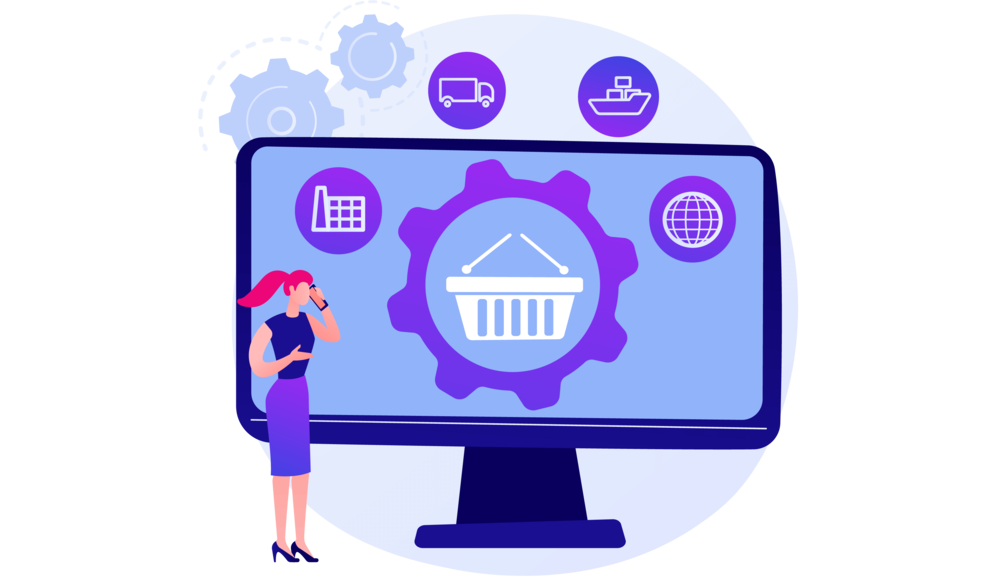The Future of Logistics: Last Mile Delivery System
In the world of logistics, the last mile delivery system is the final stage of the transportation process, where the package is delivered to its destination, which is usually a residential or commercial address. Last mile delivery is considered the most critical and expensive part of the entire logistics chain, accounting for over 50% of the total logistics cost.
In this article, we'll go over the definition of tracking last mile delivery and the current trend of this system. We'll also look at the reason why last mile delivery system is the future of logistics.
Thus, whether you're a business owner or a customer, keep reading to learn more about this expanding industry!
1. What Precisely is a Last Mile Delivery System?
The last mile delivery system is a complex process that involves several stakeholders, including retailers, logistics providers, transportation companies, and customers. The process requires a high level of coordination and collaboration between these stakeholders to ensure the timely and efficient delivery of packages.
Currently, the last mile delivery system faces several challenges, including traffic congestion, rising fuel costs, labor shortages, and environmental concerns. However, the emergence of new technologies and innovative solutions has provided a ray of hope for the future of last mile delivery.

2. The Current Status of the last mile Delivery System
The last mile delivery system has undergone significant changes in recent years due to the growth of e-commerce and the changing preferences of customers. In the past, most deliveries were made to businesses, but today, the majority of packages are delivered to residential addresses. According to a report by McKinsey, e-commerce sales in the US increased by 44% in 2020, and it is expected to reach $1.5 trillion by 2025.
The increase in e-commerce sales has led to a surge in last mile deliveries, which has put pressure on logistics providers to develop innovative solutions to cope with the growing demand. Currently, logistics providers are exploring several options to optimize the last mile delivery system, including the use of drones, autonomous vehicles, and crowdsourced delivery.
Drones have emerged as a promising technology for last mile delivery, especially in urban areas. In 2019, UPS received approval from the Federal Aviation Administration (FAA) to operate a drone airline, which would enable the company to deliver packages to remote areas and urban centers. Similarly, Amazon has been testing its Prime Air drone delivery service since 2013, and the company recently received approval from the FAA to operate its fleet of drones.
Autonomous vehicles have also gained traction as a potential solution for last mile delivery. In 2019, FedEx announced that it would partner with the autonomous vehicle manufacturer, Nuro, to test autonomous delivery vehicles in Houston, Texas. The partnership aimed to evaluate the feasibility of using autonomous vehicles for last mile deliveries and explore the potential benefits of the technology, including reduced delivery costs and improved efficiency.
Crowdsourced delivery is another innovative solution that has gained popularity in recent years. Crowdsourced delivery involves using independent contractors or freelancers to make deliveries on behalf of logistics providers. Companies such as Uber, Lyft, and Postmates have entered the crowdsourced delivery market, offering same-day or on-demand delivery services to customers.

3. Why Last Mile Delivery System is the Future of Logistics?
The last mile delivery system is considered the future of logistics due to several reasons, including:
A. Rising demand for e-commerce:
The growth of e-commerce has led to an increase in last mile deliveries, which has put pressure on logistics providers to develop innovative solutions to cope with the growing demand. With the increase in online shopping, more customers expect fast and reliable delivery, and the last mile delivery system is the key to meeting these expectations.

B. Changing customer preferences:
Customers today are more demanding than ever before, and they expect a seamless delivery experience. They want to track their packages in real-time, choose a delivery time that suits them, and receive their packages at their doorstep. The last mile delivery system plays a crucial role in meeting these expectations and providing a positive customer experience.

C. Advances in technology:
The emergence of new technologies such as drones, autonomous vehicles, and crowdsourced delivery has provided logistics providers with new opportunities to optimize the last mile delivery system. These technologies offer several benefits, including improved efficiency, reduced delivery costs, and faster delivery times. As these technologies continue to evolve and become more accessible, they will likely become more widely adopted in the logistics industry.

D. Environmental concerns:
The last mile delivery system is one of the most significant sources of carbon emissions in the logistics industry. As concerns over climate change continue to grow, logistics providers are under increasing pressure to reduce their carbon footprint. Innovative solutions such as electric vehicles, drones, and cargo bikes are being explored as a means of reducing emissions and improving sustainability.

E. Competitive advantage:
Logistics providers that can offer a fast, reliable, and convenient last mile delivery system can gain a significant competitive advantage in the e-commerce market. Customers are more likely to choose a retailer or logistics provider that offers fast and convenient delivery options, even if it comes at a slightly higher cost. By investing in the last mile delivery system, logistics providers can differentiate themselves from their competitors and attract more customers.

4. Case Studies of Last Mile Delivery System
Several companies have already implemented innovative solutions to optimize their last mile delivery system. One such company is Amazon, which has been experimenting with drone delivery since 2013. In August 2020, Amazon received approval from the FAA to operate its fleet of drones for deliveries, making it the first company to receive this approval. Amazon plans to use its Prime Air drone delivery service to deliver packages to customers in under 30 minutes.
Another company that has implemented an innovative last mile delivery system is DHL, which has been testing its "Parcelcopter" drone delivery system in Germany. The Parcelcopter can deliver packages weighing up to 2.5kg to remote locations in just 30 minutes, making it an ideal solution for areas that are difficult to access by road.
In the UK, Tesco has been using electric cargo bikes to deliver groceries to customers in London. The bikes can carry up to 80kg of groceries and are equipped with refrigeration units to keep the food fresh. The use of cargo bikes has helped Tesco reduce its carbon footprint and improve the efficiency of its last mile delivery system.

Final thoughts
The last mile delivery system is the final and most critical stage of the logistics chain, accounting for over 50% of the total logistics cost. With the growth of e-commerce and changing customer preferences, the last mile delivery system has become more important than ever before. Innovative solutions such as drones, autonomous vehicles, and crowdsourced delivery offer new opportunities to optimize the last mile delivery system, improve efficiency, and reduce costs. As these technologies continue to evolve, they will likely become more widely adopted in the logistics industry, making the last mile delivery system the future of logistics.
If you are looking for a trusted IT partner, VNEXT Global is the ideal choice. With 14+ years of experience, we surely can help you to optimize your business digitalization within a small budget and short time. Currently, we have 400+ IT consultants and developers in Mobile App, Web App, System Development, Blockchain Development and Testing Services. We have provided solutions to 600+ projects in several industries for clients worldwide. We are willing to become a companion on your way to success. Please tell us when is convenient for you to have an online meeting to discuss this further. Have a nice day!












